2020 was the first time since 1985 that I stayed in a single country for the entire year. It was also the first time that I didn’t speak English with anyone in person for more than 12 months (November 2019 to November 2020, two Zoom conversations that I can recall during that period). I also did not spend any time with cetaceans. The last time that happened was 2002.
All things considered though, I have been fortunate.
The dislocation and chaos wrought by the pandemic has not disrupted life in Japan as much as it has in many other places. The situation definitely hasn’t been good, but it hasn’t been too bad either.
Diagnosed infections per million as of the end of 2020 stood at less than 1800, placing Japan 140th on a list of 218 countries (where lower ranking is better). For comparison, the same statistic was 60,900 for the USA; 35,744 for the UK; 9,972 for Singapore; 1184 for Korea; 33 for Taiwan. (1)
There was a nationwide run on toilet paper early on, just like everywhere else it seems (I still can’t figure that one out), but overall, there has been no shortage of basic supplies, food or services. Businesses have not been required to close, though shortening of operating hours has been the norm a couple times now. We are currently on our third wave, on the precipice of another national state of emergency being declared.
Within this context, I did what I could to make the best of circumstances beyond my control, which is all anyone can do really. I read a lot. I exercised often. I watched Oogway grow. And I photographed.
Among my favourites of the year is this image of a seahorse (Hippocampus haema) giving birth. This species was officially described in 2017 (meaning that’s when it was recognised by science as a distinct species).
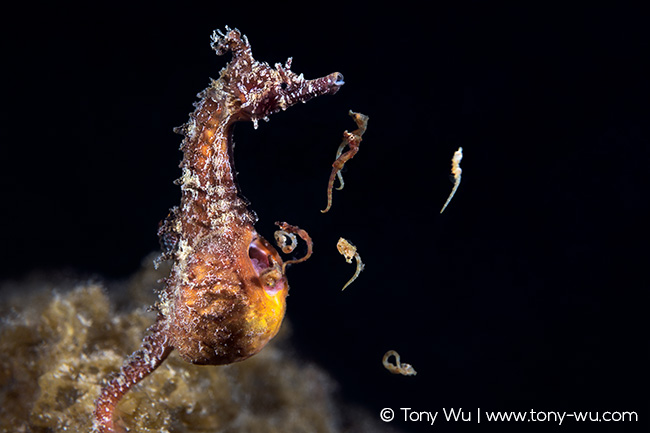
As with other seahorses, males are the ones responsible for nurturing and birthing the young. Witnessing this event was a moving experience. For lack of a better way to describe the process, males undergo spasms that I’d liken to labour pains, culminating in full-body convulsions to eject dozens to hundreds of young.
When it’s all said and done, spent males often flop and collapse, no doubt with exhaustion. Within short order though, they are back on their tails, ready and eager to spawn once more.
The next image depicts spawning of tri-spine horseshoe crabs (Tachypleus tridentatus).
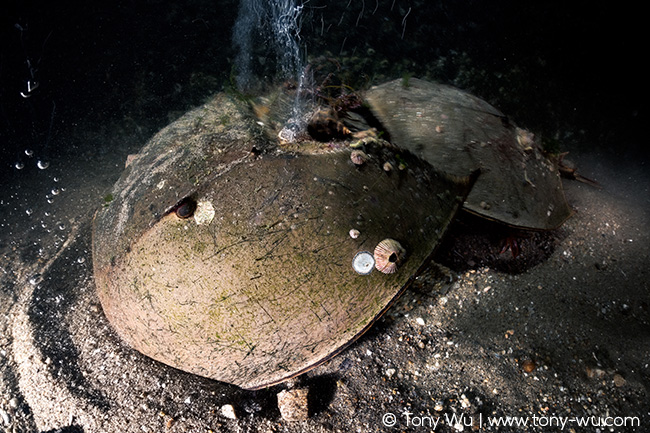
Years ago, I set my mind to photographing this event. I finally got the chance. These animals, which are not actually crabs, but are more closely related to extinct sea scorpions, spawn in shallow, murky water, with sediment that goes “poof!” and clouds up the water at the mere hint of movement.
Here, the female is poised to dig into the substrate, where she will deposit eggs. The male, who is attached to her rear, fertilises the eggs. The bubbles are air released from the sand, rubble and muck as a result of the digging. After a decent interval, they move on and repeat.
To be clear, "they move on" means that the female moves while the male just clings on, maybe paddling a bit with this tiny feet, but he's careful not to exert himself too much. In fact, for the duration of the reproductive period, the male attaches himself to the female and lets her do all the work—transport, foraging, digging, etc. I am not certain how long this period is, but I am willing to bet that at least one of the two is happy when it's over.
I have long wanted to photograph these animals because at some point, I want to write about them. There are five species. They’ve been around for over 400m years. All are endangered.
One big reason is that humans bleed them. Specifically, the biomedical industry has them collected, drained of blood, then returned to the ocean. This is for the purpose of making tests that are used to check for infections. The industry maintains that there is no adverse effect on the animals, but...humongous piles of bovine manure. Worse, there have been synthetic substitutes available since 2003, which the biomedical establishment has pretty much refused to use.
There have been some positive steps taken toward adopting synthetics in recent years, but it might once again prove to be too little too late when we should’ve known better. I hope not.
After days of mucking around in shallow silt, I visited a fish in a hole:
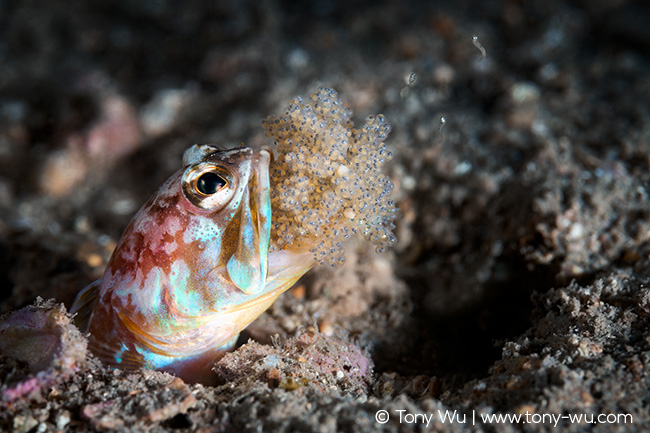
It is an Opistognathus iyonis, a species of jawfish with no common name in English that I can find. I did not have plans to photograph this fish per se, but I found myself with some time and reliable information, so I visited twice.
The first time, the fish shut the door on me. Quite literally. If you look at the photo, there is a shell at the lower left. That’s the door. That the fish slammed shut. In my face. How rude.
I later learned that this is normal. When the day is done, this species closes the hatch. But still. I took offence.
The photo above is from the second time I visited. He hatched eggs. Yes, he. Just as with seahorses, male jawfishes are responsible for birthing young. You can see three little ones in the photo achieving escape velocity.
This was the first time since the late 1990s that I’d spent time with a jawfish. It was fun, felt almost like returning to my roots.
The next photo shows spawning hairy frogfish (Antennarius striatus). The orange one is the male. You can see the fertilised egg raft between the two fish. I endured two major typhoons while waiting for this moment, sitting in a place with not much to do except read, sleep, and stare at the ocean and sky, wondering when/ if the weather would settle. The ratio of photography time to sit-on-my-rear time was something like 1: a few hundred quadrillion.
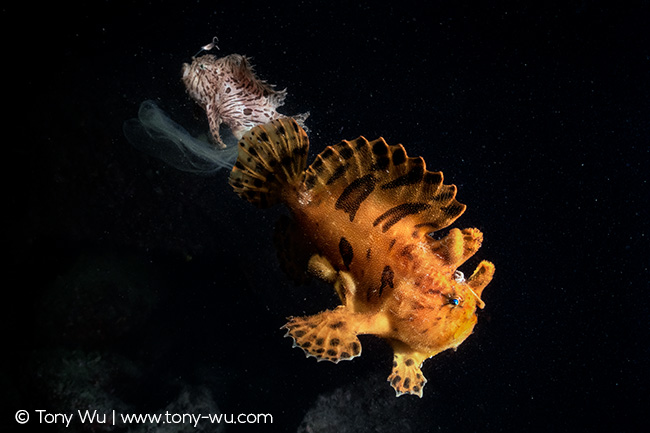
The next photo by contrast came without much effort at all. A friend showed me where the fish was. I set up the lighting I wanted, took a few photos, said sayonara.
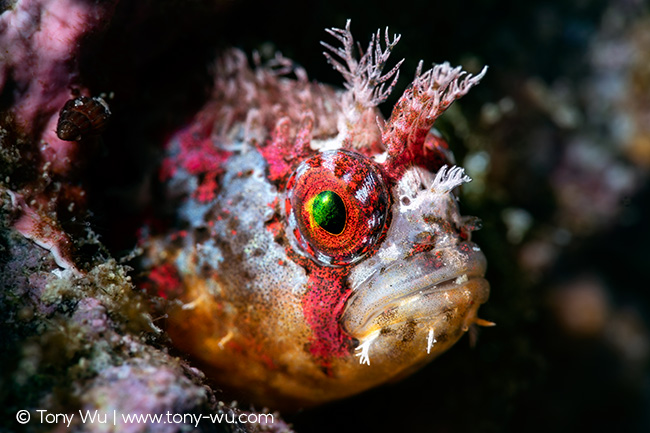
The fish is a Chirolophis saitone, a species of prickleback that also seems not to have a common name in English. It looks like a blenny. Behaves somewhat like a blenny (it can do independent twisty eyes). But it’s not a blenny. It is, however, beautiful.
That night, I ignored the pretty squid that everyone else was enthralled by, and spent an entire dive with multi-hued slinkies on speed.
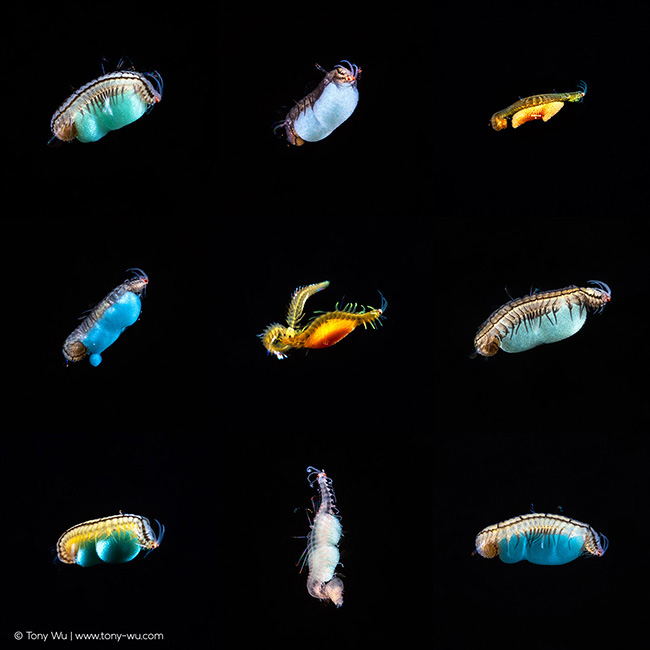
They are small polychaete worms (I’m guessing Syllidae), all of which have eggs.
When I say small, I mean squint-so-hard-your-eyes-hurt small. It was difficult to assess size, as they were wriggling and squirming at lightning speed while attempting to dine on miniscule crustaceans attracted to a light. I could barely see them. So naturally, I thought: “Hey, why don’t I devote an hour or more of my life to trying to photograph these things that are barely bigger than the center autofocus dot, moving en masse in erratic fashion at blinding speed in cold water in the dark with millions of microscopic crustaceans running visual interference?" Me and my bright ideas.
They made for a nice colourful collage though.
Finally for underwater photos, I have to highlight Kevin, the charismatic Hexagrammos otakii male that I wrote about in my previous newsletter. Such a character.
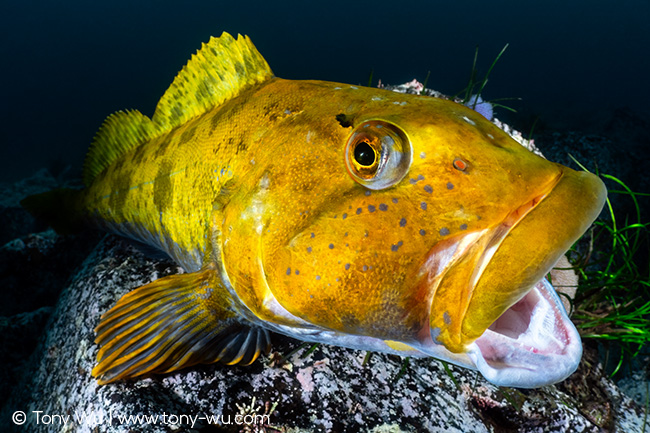
The next photo shows fresh otakii eggs, and below that are eggs that were nearly ready to burst.
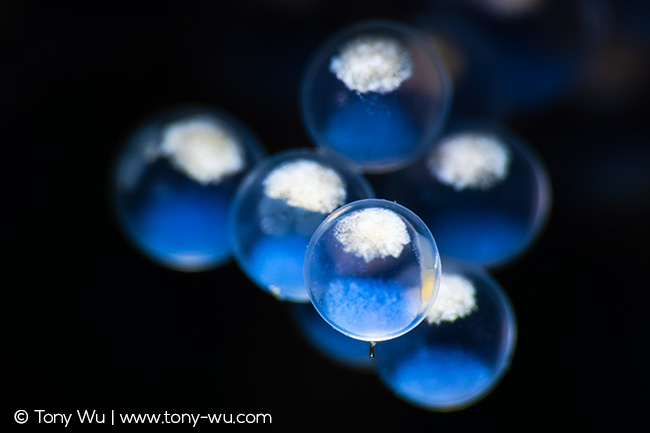
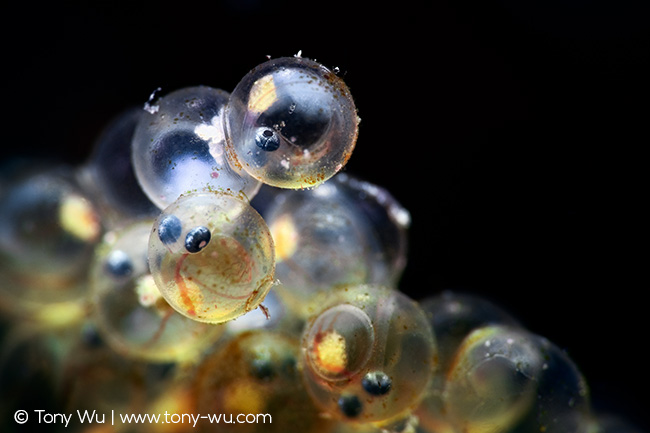
And yes, once again, for this species it is the male that is responsible for caring for the eggs. Paternal care is not all that unusual among fish species that provide protection for their developing young.
Kevin and two of his close relatives are involved in an evolutionary drama known as hemiclonal reproduction. It is perhaps the most fascinating system of reproduction that I've encountered, one that falls squarely in the category of "Things that make you go huh?" Click the above link to my December newsletter to read the story.
On land, I managed to catch the peak of autumn foliage:
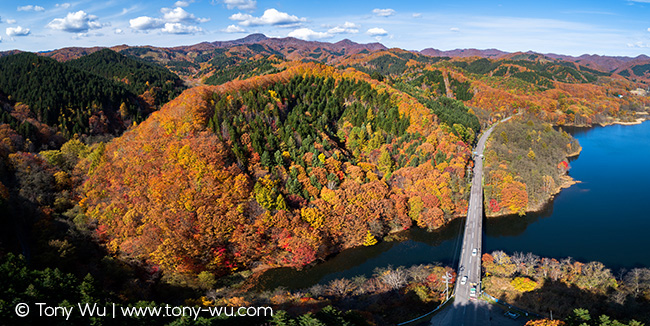
It was actually almost a week after the prime colours, but conditions had been continually overcast, windy and rainy until this break in the clouds, which lasted only a few hours.
I devoted time last year to non-marine wildlife as well. I’ll mention just a couple of photos.
First is a long-tailed tit (Aegithalos caudatus) pictured milliseconds before it bit off a piece of all-natural frozen maple syrup, eyes locked on target like a true sugar addict.
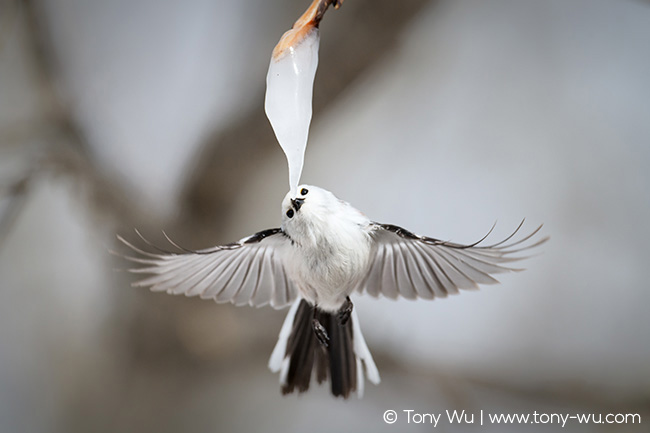
And I’ll conclude with a picture of an adorable Japanese dwarf flying squirrel (Pteromys volans orii).
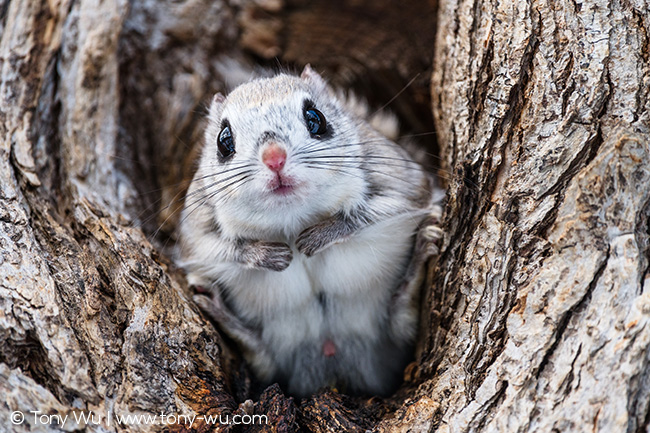
If you can’t tell that it’s a he, please find a responsible adult nearby who can explain.
I am cognisant of the fact that not everyone had the ability or opportunity to get out into nature during 2020. I hope that these photos can serve as a reminder that there is beauty and wonder almost everywhere. And I hope that this year brings better circumstances for all.
Notes:
(1) https://www.worldometers.info/ as of 31 December 2020